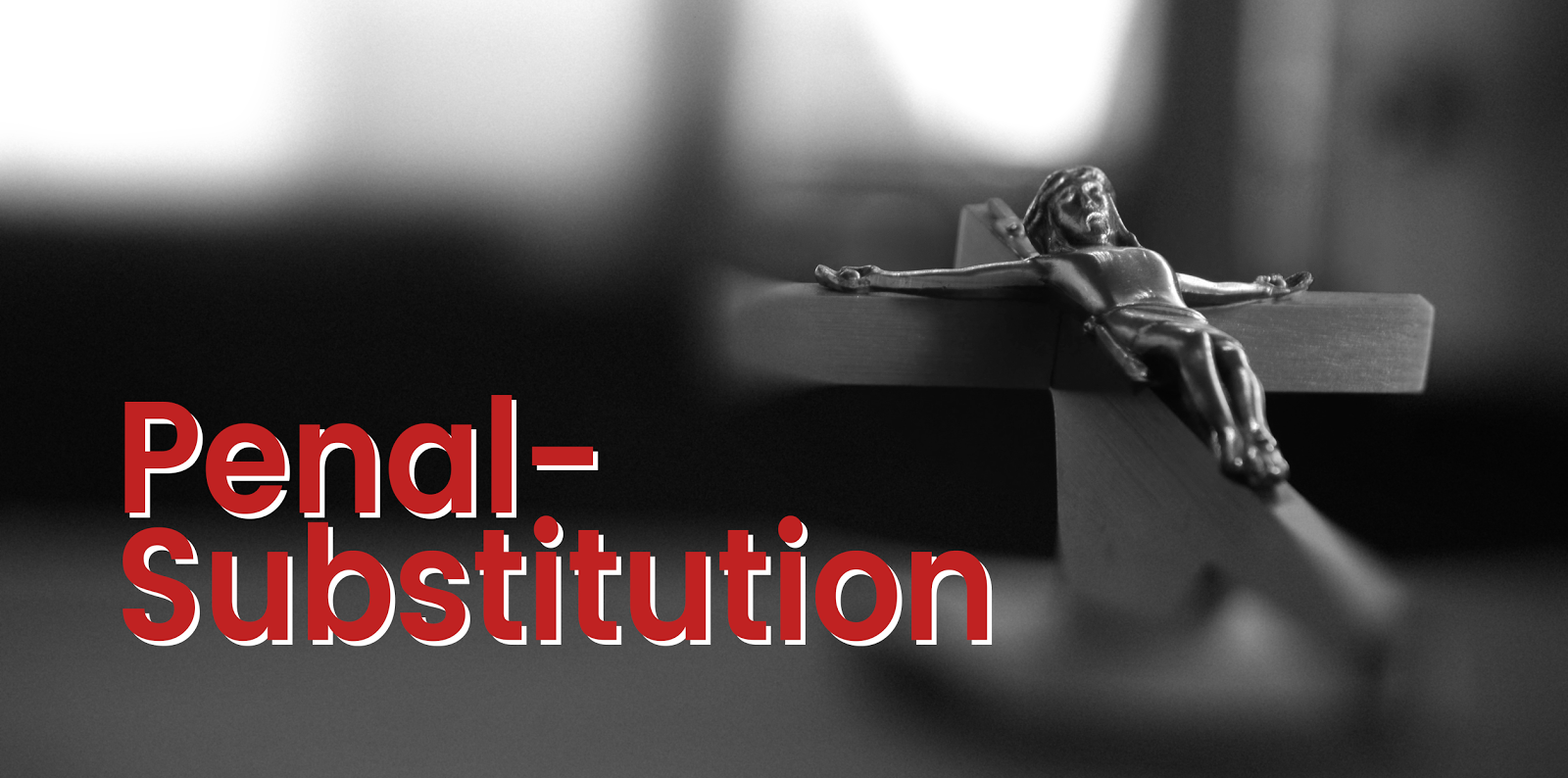THEOLOGIAN: Irenaeus (c. 130 - c. 200) Bishop, Theologian, and Saint. [1]
WORK ON SUBJECT: Aversus Haereses V
ANGLE: Transactional
THEME: Satanward [2]
IN HIS OWN WORDS:
"the mighty Word, and very man, who, redeeming us by His own blood in a manner consonant to reason, gave Himself as a redemption for those who had been led into captivity. And since the apostasy tyrannized over us unjustly, and, though we were by nature the property of the omnipotent God, alienated us contrary to nature, rendering us its own disciples, the Word of God, powerful in all things, and not defective with regard to His own justice, did righteously turn against that apostasy, and redeem from it His own property" [3]
Basically...
Ransom theory is a natural outgrowth, or meditation, on the Christus Victor Paradigm that dwells on the human condition and what God actually did to redeem (buy back) his creation. In the fall, humanity subjected itself to a kind of enslavement to sin (Romans 6:20) that requires a payment. God's order of Man's dominance over all creation is now no longer seen as a result of this fall, and something must be done to reverse the perverted course of history.
The Global Dictionary of Theology crystallizes Ransom theory into the following three parts:
(1) Satan gained mastery over humanity when the first couple chose the path of sin in the garden. Satan retains this hold on humanity through the powers of the kingdom of darkness (sin, fear, death, etc.).
(2) Through death, Jesus’ innocent life became the ransom price that was acceptable to Satan for the liberation/redemption of humanity. The New Testament passage often used to support this idea came from the very lips of Jesus: “the Son of Man came not to be served, but to serve, and to give his life a ransom for many” (Mt 20:28; Mk 10:45; cf. 1 Tim 2:6).
(3) Finally, the ransom theory typically emphasizes that Christ's victory was achieved by outwitting the devil. The inherent injustice of taking an innocent life as a ransom is the basis on which Christ defeats Satan (a notion tied to the words of Paul in 1 Cor 2:8). [2]
We know that we have been "bought with a great price" (1 Corinthians 6:20) and in Revelation 5:9 the Lamb was "slain, and purchased for God with [His] blood men from every tribe and tongue and people and nation." When viewing the Atonement form this lens, it is easy to view it as "the deliverance from captivity by the payment of a ransom." [4] While I credit Irenaeus for expounding Ransom Theory in its embryonic stage, let it be known that there was agreement among Church Fathers on the validity of this view, including Origen, Gregory of Nyssa, and Rufinus of Aquileia [2]. Even Augustine wrote the following, which is heavily influenced by Ransom language:
The Redeemer came, and gave the price; He poured forth his blood and bought the whole world. Do you ask what He bought? See what He gave, and find what He bought. The blood of Christ is the price. How much is it worth? What but the whole world? What but all nations? [5]
As has already been mentioned, Ransom Theory can be seen as an extension of the Christus Victor Paradigm. Therefore, its Angle and Theme remain Transactional and Satanward, respectively. This is not a substantially different stance, merely a new viewpoint on the topic.
Precedent
Bondage/captivity and rescue underpin the entire biblical narrative from Egyptian, Babylonian, Assyrian, Persian, Greek, and Roman oppressors. The Israelites are always warned to obey the Lord their God with the threat of oppression looming over them. Hence, the Messiah was viewed as a leader who will lead the people into political freedom from the tyranny of human government into the Kingdom of God.
Note also that this freedom from tyranny is not to usher in a state of autonomy or anarchy, but the freedom to worship their God as He desires (Exodus 8:1). This dovetails nicely when spiritualized as freedom from the bondage to sin into the dominion of righteousness.
...present your members as slaves to righteousness, resulting in sanctification. For when you were slaves of sin, you were free in regard to righteousness. —Romans 6:19b-20, NASB
Problems
The big problem with Ransom theory has to do with its tendency to promote an extreme Satanward Theme. One might begin to wonder,
To who is this ransom paid? One might be led to conclude that since Man was deceived by Satan that he was taken captive by Satan and now God must pay the ransom to Satan. Therefore, God must subject himself to Satan's pleasures in order to redeem man. Indeed, the following statement immediately precedes the aforementioned quote from St. Augustine:
Men were held captive under the devil and served the demons, but they were redeemed from captivity. For they could sell themselves. The Redeemer came, and gave the price; He poured forth his blood and bought the whole world. [5]
This horrendous conclusion, however natural it may seem to come to given the premise, is rightly inconceivable. God owes nothing to the devils. The Catholic Encyclopedia explains their response to this conclusion as follows:
...however useful and illuminating in their proper place, figures of this kind are perilous in the hands of those who press them too far, and forget that they are figures. This is what happened here. When a captive is ransomed the price is naturally paid to the conqueror by whom he is held in bondage. Hence, if this figure were taken and interpreted literally in all its details, it would seem that the price of man's ransom must be paid to Satan. The notion is certainly startling, if not revolting. Even if brave reasons pointed in this direction, we might well shrink from drawing the conclusion. And this is in fact so far from being the case that it seems hard to find any rational explanation of such a payment, or any right on which it could be founded. [4]
Who, then, is paid? We are left to conclude that Sin itself is Man's captor and the recipient of this debt. Justice deems that this price is paid before Man can hope to be free.
Conclusion
This last quotation may well be a wise warning for all theology. We use figures to help us understand cosmic truths. Figures are good things. Figures are limited things. We must understand their limitations, use them as they shed light on our experiences and help us understand scripture, and promptly discard them when human experience begins to contradict Biblical principles.
Ransom Theory helps us to understand the cost of our Atonement. We can conclude that Grace is free but not cheap, depending on one's perspective. It is free to us who were in bondage and are now set free. It is costly to the redeemer, who paid dearly to gather his own back to himself.
References:
1. "Irenaeus (c. 130 - c. 200)." In Who's Who in Christianity, Routledge, by Lavinia Cohn-Sherbok. 2nd ed. Routledge, 2001.
2. Eddy, P R., and J Beilby. "Atonement." In Global Dictionary of Theology, edited by William A. Dyrness, and Veli-Matti Kärkkäinen. InterVarsity Press, 2008.
3. Irenaeus. Aversus Haereses V. http://www.earlychristianwritings.com/text/irenaeus-book5.html
4. "Doctrine of the Atonement." Catholic Encyclopedia. http://www.newadvent.org/cathen/02055a.htm
5. Augustine. Enarration on Psalm 96, no. 5. http://www.newadvent.org/fathers/1801096.htm






